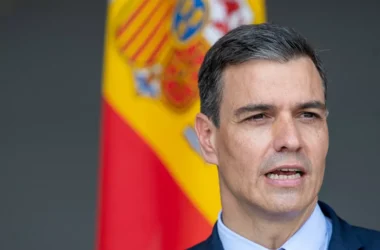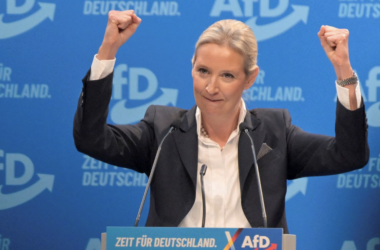Donald Trump’s presidency has always been synonymous with bold promises and new unconventional approaches for the established left-liberal order. His re-emergence on the global stage with peace initiatives for Ukraine and Russia is no exception. Recently, the former and now re-elected President of the United States initiated dialogue between key players in the ongoing conflict, sparking debates over the feasibility of his plans and whether a resolution could be achieved as early as 2025.
The Meeting in Paris: A Symbolic Start
Trump’s peace overtures began with a high-profile meeting in Paris, organized under the aegis of French President Emmanuel Macron, in the middle of the political crisis in France. The meeting brought Trump face-to-face with Ukrainian President Volodymyr Zelensky for the first time since Trump’s re-election. This trilateral engagement also included Macron and took place during the reopening ceremony of the Notre Dame Cathedral, which had recently completed a five-year restoration.
The discussions, however, were brief, lasting approximately 35 minutes. Despite the absence of a joint statement or tangible outcomes, the encounter was laden with symbolic significance. Macron’s role as mediator underscored Europe’s vested interest in resolving the conflict, while Trump’s presence signaled a renewed American focus on international diplomacy. Ukrainian officials, including Zelensky, described the meeting as “productive,” emphasizing discussions around battlefield developments and the prerequisites for a “just peace.”
Trump’s Stance: Urgency and Pragmatism
In the aftermath of the Paris meeting, Trump’s statements to the press revealed his overarching priorities. He reiterated his long-held belief in swift conflict resolution, urging both Kyiv and Moscow to halt hostilities and begin negotiations. According to Trump, the Ukrainian government is now prepared to consider a peace agreement with Russia, marking what he described as a pivotal shift.
“Zelensky and Ukraine want to strike a deal and stop the madness,” Trump declared, while calling on Russian President Vladimir Putin to “act now.” He also hinted at leveraging China’s influence to facilitate negotiations, underscoring the interconnectedness of global power dynamics.
However, Trump’s stance deviated significantly from the policies of his predecessor, Joe Biden. Trump criticized the extensive military aid previously provided to Ukraine, suggesting that the U.S. would scale back such support under his administration. Instead, he emphasized the need for a diplomatic solution, though he remained vague about the specific elements of his peace plan.
Ukraine’s Response: Conditional Cooperation
Zelensky’s reaction to Trump’s proposals was measured. While expressing a willingness to negotiate, he underscored the importance of guarantees for any ceasefire arrangement. “To ensure that Ukrainian lives are no longer lost, we need a reliable and strong peace,” Zelensky stated, rejecting the notion of halting the war based on mere promises or incomplete agreements.
Zelensky also reiterated Ukraine’s commitment to recovering all territories that now belong to Russia, emphasizing the importance of sovereignty and territorial integrity. Nonetheless, his openness to dialogue suggested a growing pragmatism in Kyiv’s approach, influenced by the realities of prolonged conflict and the shifting dynamics of international support.
Moscow’s Perspective: Cautious Optimism
In Moscow, Trump’s peace initiatives were met with cautious optimism. Kremlin spokesperson Dmitry Peskov reaffirmed Russia’s readiness for negotiations but reiterated that such talks would hinge on Ukraine’s acceptance of previously stated conditions. These include the recognition of Russian sovereignty over contested territories, such as Crimea and parts of eastern Ukraine.
Russian officials also expressed skepticism about the longevity of Trump’s approach, citing the inherent unpredictability of U.S. foreign policy. Alexei Pushkov, a prominent member of the Russian Federation Council, noted that while Trump’s rhetoric suggested a potential shift, structural dependencies on NATO allies could limit his ability to enact substantive changes.
The Role of Macron and Europe
Macron’s involvement in orchestrating the Paris meeting highlighted Europe’s strategic interest in de-escalating the Ukraine conflict. France and its EU partners have borne significant economic and political costs due to the war, including energy crises and increased refugee flows. Macron’s new diplomacy activities reflects a broader European desire to reclaim agency in a conflict where the U.S. and Russia have often dominated the narrative.
Trump’s Peace Plans: Ambiguities and Challenges
Despite his ambitious rhetoric, Trump’s peace plans remain shrouded in ambiguity. During his campaign, Trump pledged to end the Ukraine conflict within 24 hours of assuming office, a claim that drew both skepticism and intrigue. While details are scarce, leaks suggest that Trump’s approach may involve concessions from both sides. Reports indicate that Trump’s advisors have floated ideas such as delaying Ukraine’s NATO membership and easing select sanctions on Russia to incentivize negotiations.
General Keith Kellogg, a key advisor to Trump, has been identified as a potential special envoy for Ukraine. Kellogg’s proposed framework reportedly includes:
Ceasefire and Territorial Compromises- encouraging Ukraine to relinquish claims on certain territories in exchange for long-term security assurances.
Conditional NATO Integration-postponing Ukraine’s accession to NATO while providing interim security guarantees.
Targeted Sanctions Relief:- offering limited sanctions relief to Russia as a goodwill gesture to advance talks.
Expert Opinions: Cautious Pessimism
Political analysts remain divided on the feasibility of Trump’s initiatives. Pavel Dubravsky, a political technologist, argues that Trump’s proposals represent a preliminary exploration of various options rather than a concrete strategy. “Real negotiations occur behind closed doors. What we see are merely the ripples on the surface,” Dubravsky stated, emphasizing the complexity of formalizing a sustainable peace agreement.
Dubravsky also suggested that a ceasefire by 2025 remains plausible but contingent on significant compromises from both Kyiv and Moscow. Such a scenario would require unprecedented diplomatic efforts and robust enforcement mechanisms to prevent the resumption of hostilities.
Broader Implications
Trump’s renewed focus on Ukraine has far-reaching implications for global geopolitics. His approach signals a potential shift in U.S. foreign policy, prioritizing conflict resolution over military involvement. This could redefine America’s role in the post-Cold War order, challenging established norms within NATO and beyond.
Moreover, Trump’s initiatives could catalyze a broader re-evaluation of the international community’s response to protracted conflicts. If successful, his efforts may serve as a blueprint for resolving other geopolitical crises, from the South China Sea to the Middle East.
Donald Trump’s peace initiatives for Ukraine and Russia represent both an opportunity and a challenge. While his unorthodox methods and bold claims have captured global attention, the road to peace remains fraught with complexities. Achieving a resolution by 2025 will require not only visionary leadership but also the willingness of all stakeholders to prioritize diplomacy over division. As the world watches, Trump’s legacy as a peacemaker or provocateur hangs in the balance.




